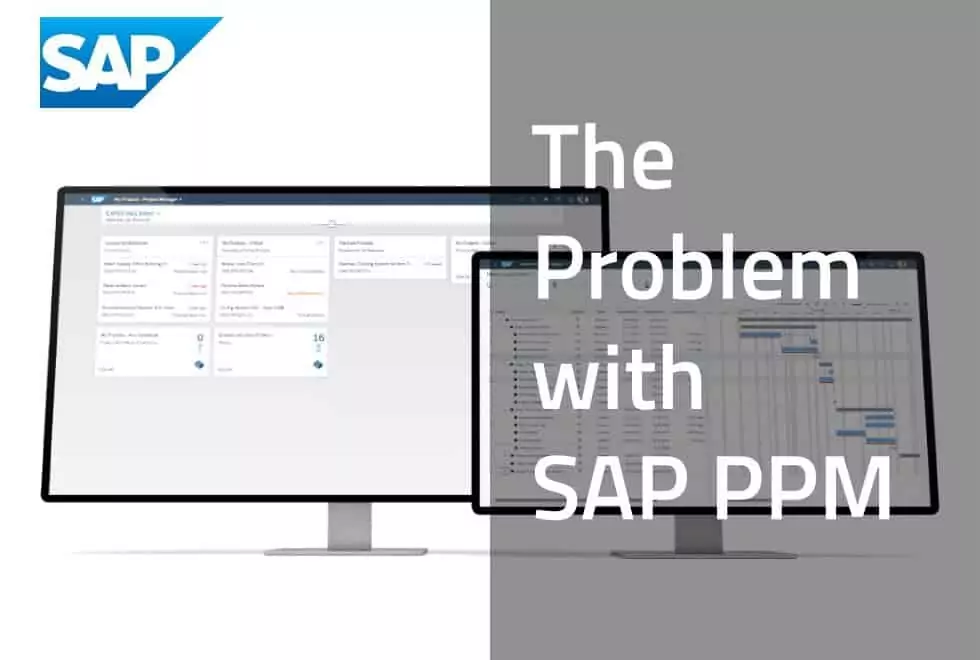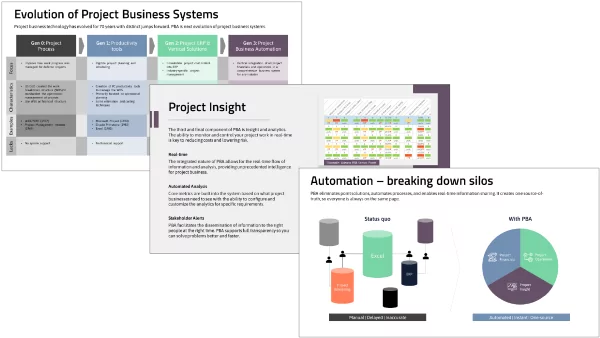It is often confused with SAP EPPM (Enterprise Portfolio and Project Management), which is the official name of the solution from SAP.
SAP PPM is used to collectively manage and analyze for investment a portfolio of projects. In this sense, it is truly a traditional portfolio management tool.
There is some confusion as to what SAP EPPM includes. According to SAP, EPPM includes SAP PPM and SAP PS (Project System) – which is the tool where the projects are actually executed. For the rest of this article, we will use “PPM” to refer to SAP’s EPPM product, which includes both PPM and PS.
Why SAP PPM Doesn’t Work for Most Companies
While PPM (from SAP or others) is a useful tool for some companies, its major downfall is that it is not a project business system. As such, it has limitations around what it can do and the benefits it can bring your organization.
For many companies where projects are central to their business (such as AEC, energy, aerospace and defense, project manufacturing, biotech and pharma, and professional services), PPM tools simply are not robust enough to manage their business. There are some crucial capabilities missing in these tools, such as a cost breakdown structure and the associated financial controls that a CBS gives you.
There are many factors when you need to manage projects like a business that PPM tools cannot provide. If you are expecting a completely integrated business system for your project business with SAP PPM, you may be disappointed.
SAP PPM Features and Capabilities
SAP touts many project and portfolio management capabilities with its PPM solution. Here is a summary of those features.
Portfolio Management
Generate project proposals, prioritize them, and monitor progress.
Project Management
Oversee projects, tasks, and timelines, assign resources, and track progress.
Resource Management
Identify the resources, check availability, see utilization, and manage project bottlenecks.
Commercial Project Management
Do issue and change management and project financial planning.
What is missing?
Managing your project business requires much more, including detailed financial controls that are managed in a cost breakdown structure separate from your work breakdown structure, such as EAC, earned value, CTC, variance analysis, and more.
PPM is not Project Business Automation
SAP PPM clearly is an attempt at Project Business Automation, trying to create an integrated business system for project-driven business. The premise of the category is to eliminate the silos of applications and data that Project Businesses typically use in favor of one platform that incorporates key Project Business functions, including:
Adeaca has been working in the PBA space for 15 years with many great customers using our PBA solution. PBA and PPM are not the same thing.
When to use SAP PPM
Knowing when SAP PPM makes sense for your company requires the answer to a few simple questions.
- Are projects a small part of your company?
- Are your projects simple and short in duration?
- Are you happy running your project financials and cost management in spreadsheets?
If you answered yes to all three questions, then SAP PPM may work for you.
If you answered anything other than yes for any of the three, you may need to explore other options.
Don’t buy a business system if it doesn’t support your whole business. If an application only covers a small portion of your needs but you still need to support the bulk of your processes with ancillary apps, tools and spreadsheets, or make massive custom modifications to it, keep looking.
If your goal is to eliminate the need for those spreadsheets and ancillary applications and be able to manage your project business in one comprehensive business system, then Adeaca PBA may right for you.
Learn More: Project Business Automation












